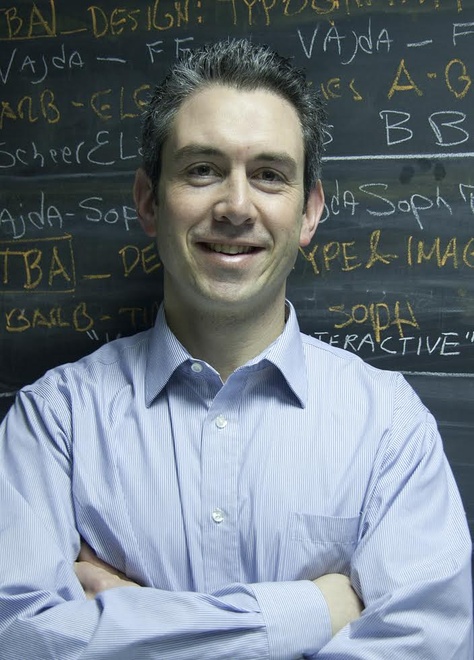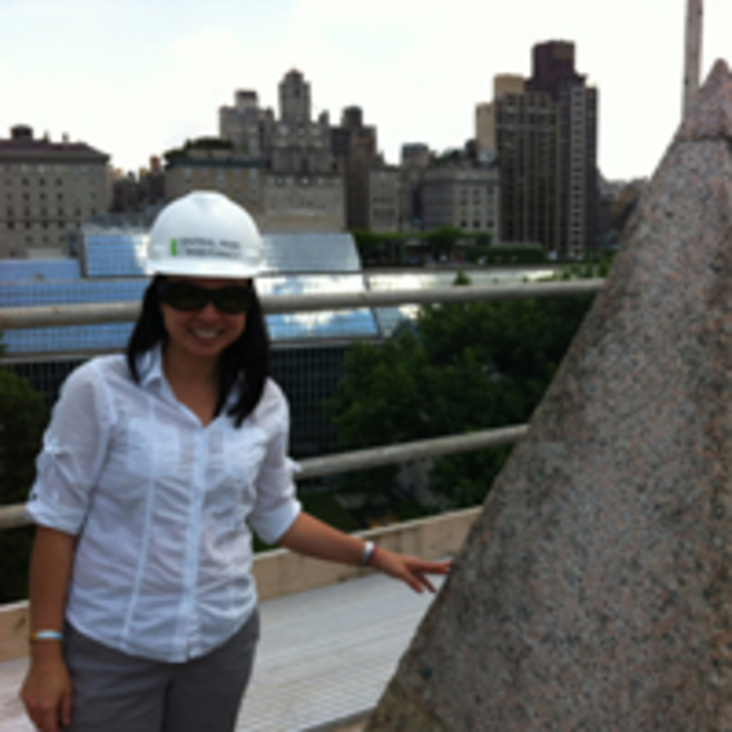Ezra Shales (PhD 2007) is an art historian, curator, and artist whose research, publications, and exhibitions explore the intersection of design, craft, and art in modern and contemporary culture. A professor at Massachusetts College of Art and Design in Boston, he is the author of
Made in Newark: Cultivating Industrial Arts and Civic Identity in the Progressive Era(2010), which analyzes art as an expression of civic ideals. As a curator, he is currently preparing two exhibitions opening in 2015, one at the Museum of Art and Design and the other at Alfred University. He has exhibited his own work at the Brooklyn Museum, P.S. 1, Art in General, and Artists Space. He recently answered a few questions about his BGC studies and his career.
What attracted you to the BGC’s graduate program?
In 2000, I was commuting from Brooklyn to the Katonah Museum, where I worked as the director of education. I was on a Metro-North train and halfway through reading
Death in the Dining Room by [BGC professor] Ken Ames. In his book, Ames not only matched my obsessions and observations of the world but also sliced them open with a useful quotient of humor and a greater measure of insight than I was capable of mustering. I decided to apply to the BGC even though I understood that American material culture was a small component of its offerings then. My hunch was that my curiosity and enthusiasm would be supported.
What was your focus of study here? How did you find yourself involved with it?
I came to graduate school with few expectations of a career path and a surfeit of intellectual questions; I was already hooked on the perplexing histories of the American museum and how few historical narratives matched the many labyrinthine collections that are outside of Manhattan. The wonderful, amazing, and brilliant trio of Ken Ames, Amy Ogata, and Pat Kirkham helped me develop my dissertation topic (on design exhibitions as a reflection of regional identity in Progressive-era Newark, New Jersey) and then volleyed drafts back to me. That period of search and research was as it should be—a rollercoaster ride of discovery and dismay, as artifacts woke me up and my own prose pulled me down. The BGC’s unparalleled location and institutional relationships permitted me to connect to smart and generous souls such as Kevin Stayton at the Brooklyn Museum and Ulysses Dietz at the Newark Museum. The hours they dedicated to trolling through artifacts—as did the librarians in Newark, including Bill Dane and William Peniston—are some of the greatest gifts I was lucky to receive.
Describe your current position.
I am privileged to teach design history at America’s only stand-alone public art school, Massachusetts College of Art and Design in Boston. As a recovering addict of London’s Victoria and Albert Museum and a former external examiner at the Royal College of Art, I relish the fact that MassArt was established by one of Henry Cole’s protégés and sits across the street from the Gardner Museum and the Museum of Fine Arts. While these institutions are the opposite of public and free, they do provide complimentary admission to my students and are fantastic places to think about the glories as well as the problems inherent to the history of design and the decorative arts.
What projects do you have in the works?
I am the curator (or maybe “idea man” is closer to the mark) for two exhibitions opening in 2015: the first in April at the Museum of Arts and Design, titled “Pathmakers: Women in Art, Craft and Design, Midcentury and Today,” and the second in September at Alfred University, titled “O Pioneers! Women Ceramic Artists, 1925-1960.” They stem from the same research. I am finishing my current book,
Common Craft, which is the first jargon-free text on the subject since David Pye’s. Then I hope to burrow into one of the stellar local archives in Boston and focus on maritime construction and architecture for the next ten years. It is a wonderfully rich subject, and archives are a soothing respite of rational research after the helter-skelter of museum exhibitions.


